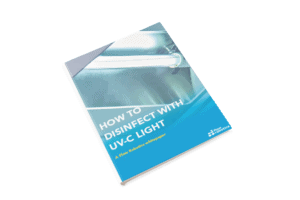How to disinfect lab equipment with UV-C Light
How UV-C light works
Microorganisms are much smaller than human cells and penetrating their cell structure requires much smaller wavelengths of light. UV-C is ideal for that. When UV-C rays penetrate a cell, they create a serious disruption in the microbial replication and protein expression processes which the cell cannot survive without.
When the DNA that manages, these processes is exposed to UV irradiation, it will result in pyrimidine dimers formation. This is because UV-C light causes adjacent thymine bases to form a chemical bond, making DNA unable to replicate.
Thus, UV-C radiation causes cellular breakdown and kills the microorganism in both air, water, and on surfaces. This makes it a fantastic disinfection method for labs that work with living viruses, bacteria, and other microorganisms.
It is also quite useful if you are working with free DNA as UV-C light breaks down any amplicons that might linger in the air. It renders the free DNA from being useful templates in subsequent PCR – effectively preventing cross-contamination.
A complete loss of genetic profile in naked DNA has been detected after just 2 minutes of UV-C radiation exposure.[1]
UV light does not reflect well so it is important that the light hits all surfaces directly, preventing shadows from forming. This makes it most effective when used in instruments, such as liquid handling robots, rather than as free-standing lamps.
[1] Effect of ultraviolet C radiation on biological samples – PMC (nih.gov)
More information on UV Light
Ever wondered how much UV Light you need to kill a specific bacteria or virus? Then check out this whitepaper for a good overview.

Get my copy
Read more about our UV light solution
The flowbot® ONE is available with UV light to make your clean-up process simple and effective.
